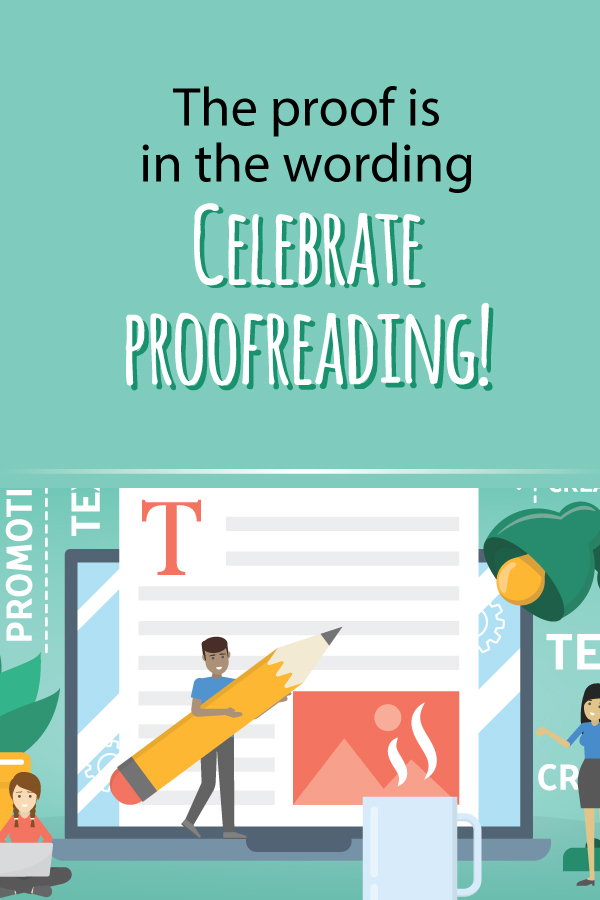When you hear the word proofreading, you probably have flashbacks to writing essays in middle school English class or stumbling through reading your essay aloud. Maybe you think about how more people on social media should proofread their own posts more often. I’d be willing to bet that a lot of people associate proofreading with spell-check and nothing more. But there’s so much more to it, including its own holiday! National Proofreading Day is on Friday, March 8. It's probably not a coincidence that National Grammar Day falls within the same week (March 4). Our Pitsco Editing department is celebrating big this week!
As a technical editor at Pitsco, proofreading is an everyday process for me. My job is to edit all sorts of documents; curriculum, various types of guides, The Pitsco Network magazine, blogs like this one, and more! I could easily talk for ages about the importance of proofreading your own words – but let me direct your attention to the subject of coding.
Proofing Code
Coming into this job, I didn’t know much about code. But because I work so much with TETRIX® and regularly edit code for our student and teacher guides, that had to change. Both the TETRIX PRIZM® and PULSE™ Robotics Controllers are programmed using the Arduino Software (IDE), so I learned a lot about the Arduino programming language on the fly. After all, in order to do a quality edit on a document, you need to understand its content. I was in luck, though! I got to edit the TETRIX PRIZM Programming Guide, which teaches students about how the PRIZM controller works – that made it easy for me to learn the ropes. As a result, I quickly learned that proofreading is a vital step to cleaning up and verifying code!
While you code your own robot, you’re probably initially concerned about the robot’s functionality and making sure you input the correct steps in the proper order. But as you double-check your work, did you realize you’re proofreading? It’s true – that act of combing through your work for mistakes is the definition of proofreading.
And even though proofing is usually one of the last steps you take when writing any material (think of it as polishing the final product), it’s helpful to proof as you write. This helps you avoid needing to fix a lot of little mistakes later on that you could have caught as you typed the code the first time around. It could save you a lot of time.
Proofing Language
In code, the importance of proofing is pretty straightforward – if a parenthesis is out of place, a command is misspelled, or something else is amiss, then the program simply won’t work. But proofreading language isn’t so black and white – language can be a little trickier than code because there isn’t always a definite right or wrong way to write.

A good guideline to stick with when editing is to make your words as concise and accurate as possible, especially in academic or formal writing. In more informal stuff, at the very least, make sure everything is spelled correctly and that the thoughts you put down make sense. In most cases, you just want to avoid miscommunication – longer, convoluted, or run-on sentences can cause someone to misread your work.
Usually in informal writing situations, such as emails at work, a quick proofread is all you need – just glance over your words again to be sure you can understand them. Maybe even read your words out loud to yourself; hearing something out loud can put it in a different perspective.
In more formal writing, definitely consider getting another person to read over your work if you are even the least bit unsure about something in it. Your proofreader can be a friend or a coworker or, if you have them at your workplace, consider using editors as a resource. They’d be happy to help.
Proofing Careers
If you enjoy helping others improve their writing or enforcing format and word-choice consistency, maybe entering the editing field is for you. You can choose from several types of editing careers, and many of them reflect different aspects of the editing process.
Two broad categories of editors are freelance editors, who pick and choose what kind of content to edit, or editors in a permanent position, who work on assignments specific to a company. Every kind of editor employs a sense of logic and gets to use his or her knowledge of the English language every day. For me, it’s the best of both worlds – editing implements both creativity and logic.

Copy editors and proofreaders usually focus specifically on grammar, punctuation, fact-checking, and high-level formatting. Developmental editors tend to work directly with a writer and his or her content; they get quite close to the material. Editors for publishing companies often fall into this category. Higher-level editors for magazines or newspapers choose what stories get into a publication. Editors-in-chief oversee the editing department and coordinate projects; they tend to give the final look-over on a publication before it gets sent out to readers. People in any of these positions often start out as copy editors and move up through the ranks – but one thing they have in common is an eye for detail.
A lot of editors specialize in one topic over another; for example, a fashion magazine editor would never work on a college-level anatomy textbook. I’m lucky in that I get to edit a variety of topics – one of which is code. It turns out that code is one of my favorite things to edit. Code poses a different kind of challenge from editing articles or curricula, and I enjoy learning more about how it works every time I edit a new example sketch.
But you don’t have to be an editor to appreciate the importance of proofreading. Long story short, please proofread your own work, no matter what field you’re in, no matter what you write. Conciseness and accuracy can avoid miscommunication in lots of ways. Happy proofing!

TOPICS: BEYOND THE CLASSROOM, ROBOTICS, Culture, Trends, Careers, Coding



